By “The Dons” I mean the original team of that name, who played at the old Plough Lane ground and who we would first meet in their first season in the Southern League Division One in 1964/65 after they transferred from the Isthmian League that close season. Wimbledon would go on to gain promotion to the Premier Division in that first season although we did beat them 2-0 at home in front of over 2200 fans.
Moving forward a few years to 1969, and with the Red Devils (managed by Roy Jennings) having achieved a miraculous promotion on a shoestring budget (this is featured on one of my displays at our Crawley Town exhibition, currently running at the Crawley Museum), we would start the 1969/70 season in the Southern League Premier Division. This league was basically the top level of non-league football at the time, and dominated by teams such as Wimbledon, Hereford, Cambridge United and Chelmsford City. These were the days before top-level players could earn enough in their prime not to have to worry about money in later years, and I remember that season seeing ageing players such as the legendary John Charles (ex Leeds United and Juventus) turning out for Hereford and Ron Flowers (Wolves, 49 games for England and a member of the 1966 World Cup squad) playing for Telford United.
It was a daunting prospect, but we started the season fairly well with draws against Poole Town and Romford and a fine 4-2 home win over Kings Lynn (Tony Kingston, 2, Dave Cockell and OG). We followed this with a narrow 1-0 defeat at Hereford United (John Charles the scorer!) which started a run of seven games without a win and brought home to us fans how tough this season was going to be. This with a small budget and a basic squad of 15 players, who were expected to play 42 league games and probably another 20 floodlight league and cup games on poor pitches while – in most cases – doing a regular daytime job. It tends to make some of us older fans a bit less sympathetic to the claims that modern footballers are overworked!
Our first meeting with Wimbledon that season would be at Plough Lane in the fourth qualifying round of the FA Cup. We had reached that round with a comfortable home win over Dorking Town in the first qualifying round in front of 992 fans. Alton Town gave us a really tough match in the next round before we came out on top with a 1-0 win in front of a crowd of 1,121. The third qualifying round took us to Wokingham Town (see match photo of us scoring), a potentially awkward tie, but we won comfortably 5-2 (attendance 671) to set up the clash with Wimbledon on Saturday 1st November 1969.
With Wimbledon one of the very top non-league sides in the country, it was always a big ask, but we managed to call on all the fine defensive play we had used to gain promotion, and with a nine-man defence and John Maggs in goal, we held out for a 0-0 draw in front of a 2,639 crowd. From memory, it was a tough and mainly “backs to the wall” game for us, but I do remember we nearly won it late on when Phil Basey put a glorious chance just past the post right in front of us visiting fans.
John Maggs was arguably as good as any keeper outside the football league, and with Dickie Guy between the sticks for Wimbledon, we had arguably the top two keepers at this level of football, both of whom were more than capable of playing at a higher level but who performed with distinction for many years at our respective clubs.
The replay the following Tuesday was played in front of a record Town Meadow crowd of 3,256, but another 120 minutes of play (extra time played in replays) still couldn’t produce a goal, although as the attached headlines show, we produced a far more attacking performance, with Wimbledon having to hang on at times, before we both had to settle for a second replay which was scheduled for the following Monday, 10th November, at Guildford City’s Joseph’s Road ground. Before that, though, on Saturday 8th November, we had an intriguing FA Trophy tie against Lowestoft Town from Suffolk. This was the first season of the FA Trophy, which had been established as a competition for senior non-league clubs who paid their players and were therefore excluded from the FA Amateur Cup.
We produced a very weary performance against Lowestoft, probably also with one eye on the FA Cup replay two days later, and had to settle for a 2-2 draw in front of 948 fans, with our goals both scored by Eddie McMullen. Also included in our side that day was one Bobby Houghton, who we had signed from Tonbridge to try and lessen the load on a small squad. Some may remember the name as he would more famously go on to manage Swedish side Malmo to the 1979 European Cup Final (when it was a proper league champions knockout competition, not the bloated “Champions” League it is now), losing to Brian Clough’s Nottingham Forest.
Two days after Lowestoft it was off to Guildford for the Wimbledon second replay, where a big crowd saw another tense and tight game with Crawley almost taking the lead in the first half when Charlie Livesey hit the post. Both keepers were earning their money before finally, after 278 minutes of deadlock, a foul by Dave Cockell in the box handed Wimbledon a chance to score from the penalty spot, and Eddie Bailham made no mistake, sealing a 2-0 win in the last five minutes with a second goal as Crawley chased an equaliser.
After this epic tie on the Monday the players had to quickly get over the disappointment as they faced the Lowestoft FA Trophy replay in Suffolk just three days later on Thursday 13th November. This meant some of the players (pretty much the same team as for the Wimbledon game) having to leave work early for the 300-mile round trip for the evening kick-off. There was no squad rotation, overnight stays or mass substitutions, and only one sub in those days.
Lowestoft played in the Eastern Counties League and were top of the league at the time, so our subsequent 3-1 win (Basey, Livesey and McMullen) in front of an impressive 1,655 crowd was an excellent result for a very tired bunch of players who, on arrival home in the early hours, would be up for work just a few hours later!
Luckily our match at home to Weymouth on the Saturday was postponed due to FA Cup commitments for our opponents, leaving us a few days before the next Premier Midweek Floodlight League game at Slough.
Our reward for beating Lowestoft in the FA Trophy was a second qualifying round trip to Ramsgate on Saturday 22nd November although, according to a later programme editorial, the team coach managed to get lost and end up in Dover, delaying the match by 25 minutes and making our 0-0 draw another commendable effort.
On the following Monday, 24th November, we managed to fit in a rare league game (we had played almost as many cup ties as league games so far this season), our only one that month, when Gloucester City were our visitors and the game finished 2-2 (Basey and Goodgame) after we led 2-1 at half time.
We would then move on to the Ramsgate FA Trophy replay on Thursday 27th November, but the heavy schedule finally started to take its toll, and a Ramsgate side including ex Red Devil Bob Finch would run out 3-1 winners.
As I seem to remember happening quite often in those days, we would suffer a reaction to going out of the cups, although in hindsight, this was probably as much to do with tiredness as disappointment.
Whatever the reason, though, we certainly suffered as we moved into December, with tough league games away to Bath City and Wimbledon on consecutive Saturdays and a rearranged home game against Weymouth sandwiched between them. On the Monday before the Bath City game, we played a PMFL game at Guildford and, just to completely tire out the players, arranged a home friendly with a strong Fulham on the Thursday, which we lost 4-3.
No great surprise then that we were thrashed 6-1 at Bath City on Saturday 6th December, and followed this up on the following Tuesday with another stuffing, this time 5-1 at home to Weymouth after leading 1-0 at half time through a Basey goal.
It’s fair to say that those of us heading to Plough Lane on 13th December for a Southern League game, our second visit to the ground that season, travelled more in hope than expectation. Finding ourselves 5-0 down midway through the second half, this indeed proved to be the case. At this point I had had enough, and started heading for the bar at the other end of the ground, with a few stops along the way bemoaning our display with other suffering Red Devils fans in the 1,322 crowd. I am not sure how long the walk took me, but by the time I reached the bar we were 9-0 down and the decision to leave out John Maggs in goal in favour of the unfortunate Phil Patrick (pictured) was looking a bit suspect!
After a 4-2 defeat at Gloucester the following Saturday, we did rediscover some of our previous defensive resilience with an excellent 0-0 draw at Brentwood on 23rd December and good 1-1 draws in the next two games, at home to Yeovil (Basey) and away to Margate (Derek Leck), but succumbed to a 6-2 defeat (Leck and Colin Blaber) at Kettering before the home league game against Wimbledon on 31st January 1970.
Optimism amongst us Red Devils fans was in short supply ahead of the game, but in the end we had the best of a 1-1 draw (Haining), raising the spirits for the next Saturday’s trip to table topping Cambridge United. Unfortunately, the only good thing to be said was that we conceded fewer goals than we did at Wimbledon, but not by much, as Cambridge ran out 8-0 winners on their way to the league title (and that summer were elected into the Football League, replacing Bradford Park Avenue), whereas we were relegated back to Division One after just one season. It would take another 14 years for us to reach the Premier Division again.
This Friday night I would settle for a boring 1-0 or 2-1 win against AFC, but irrespective will likely share the odd memory of those far off days with other long-term fans in Redz bar after the game. Merry Christmas!
Mick Fox – mjfjo@yahoo.co.uk
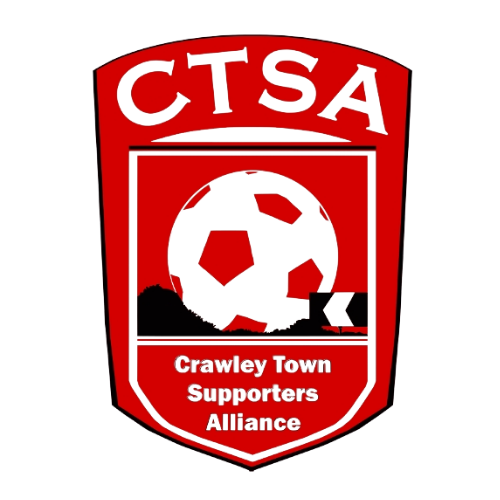
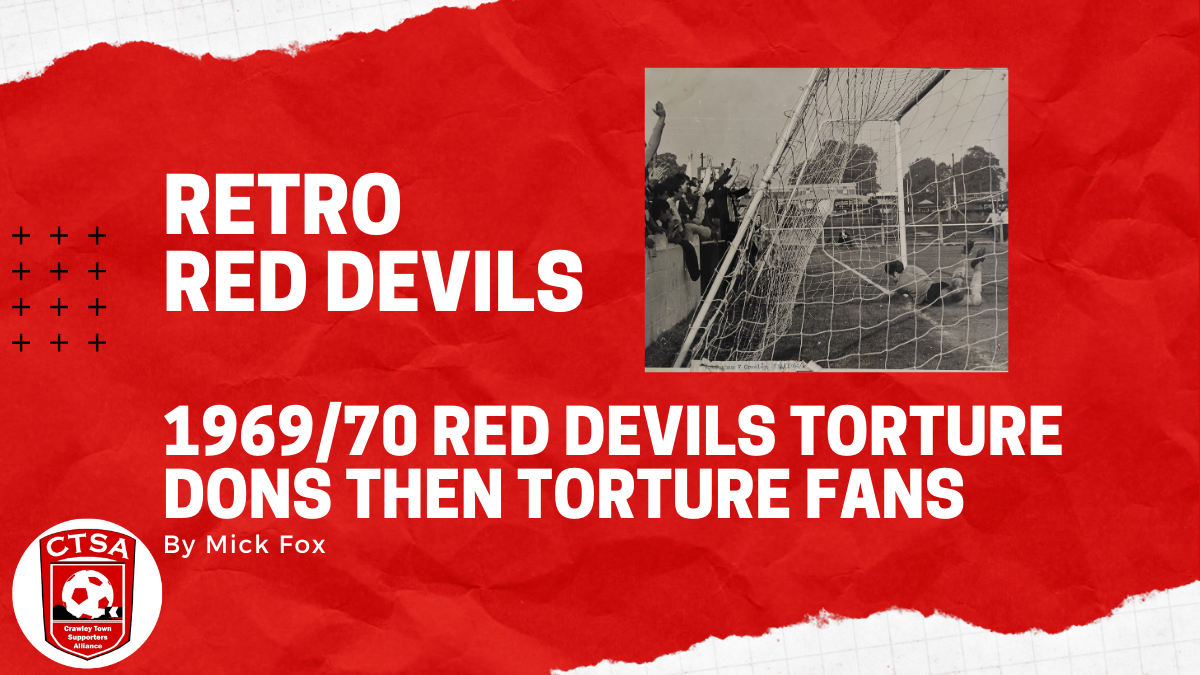
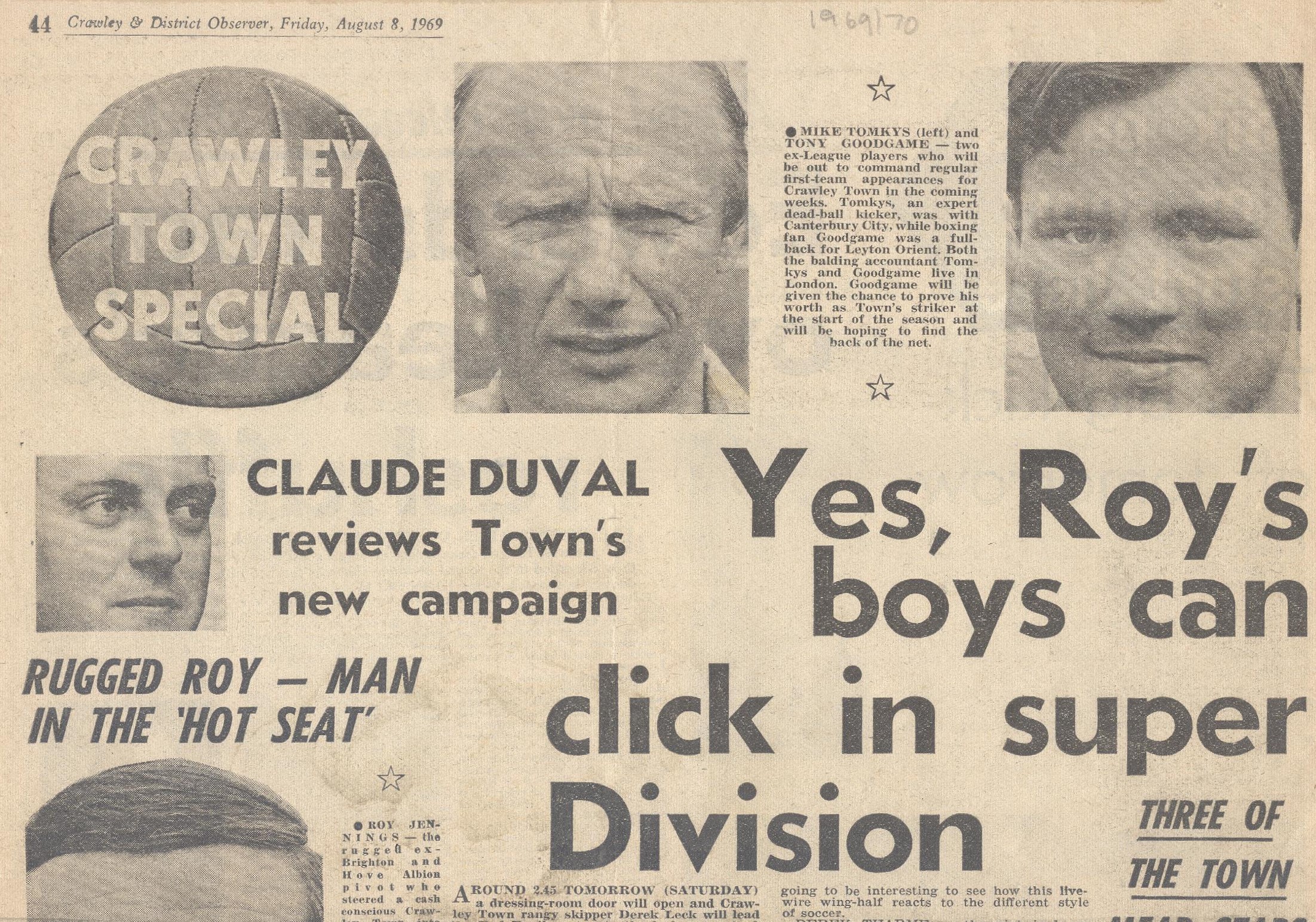
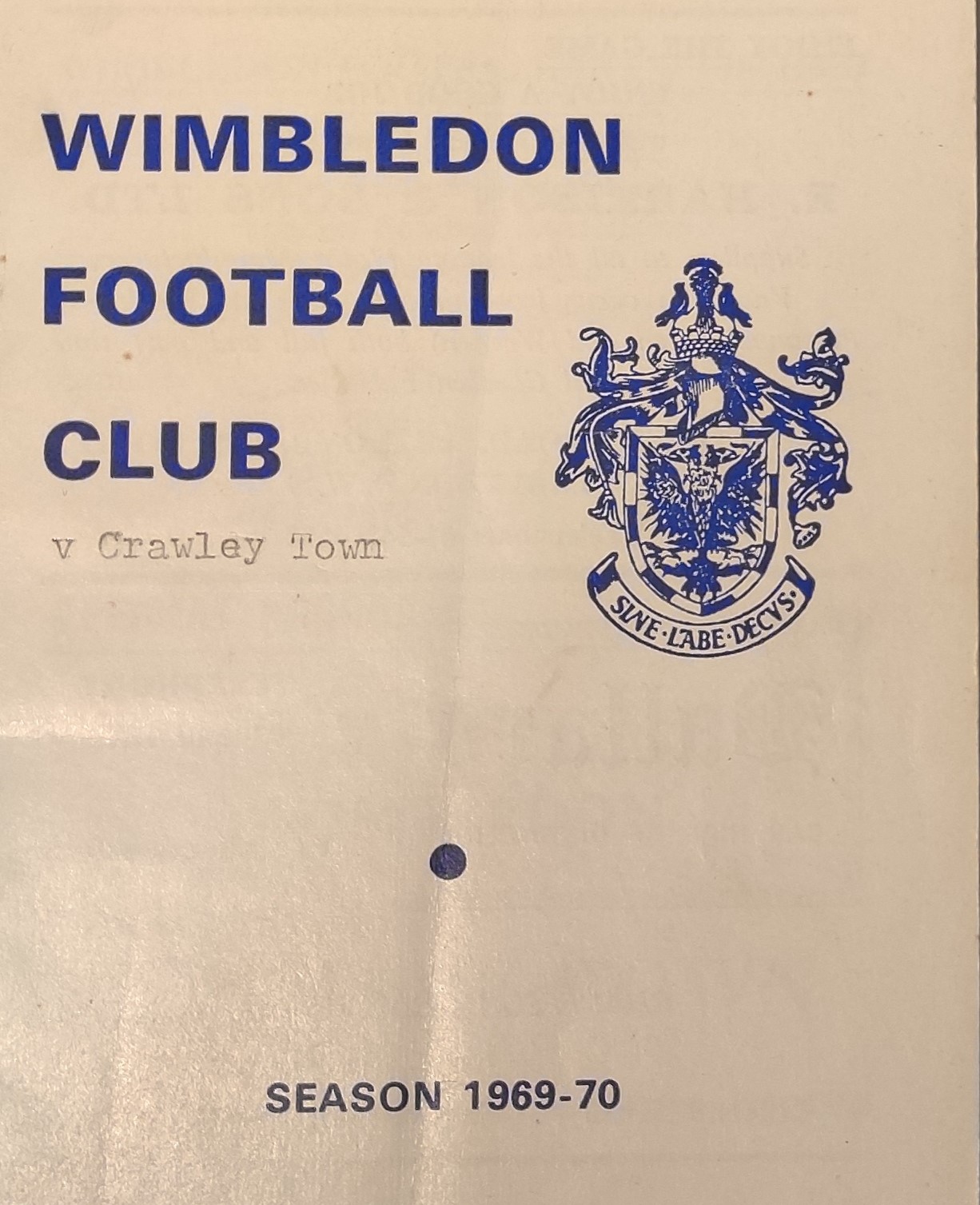
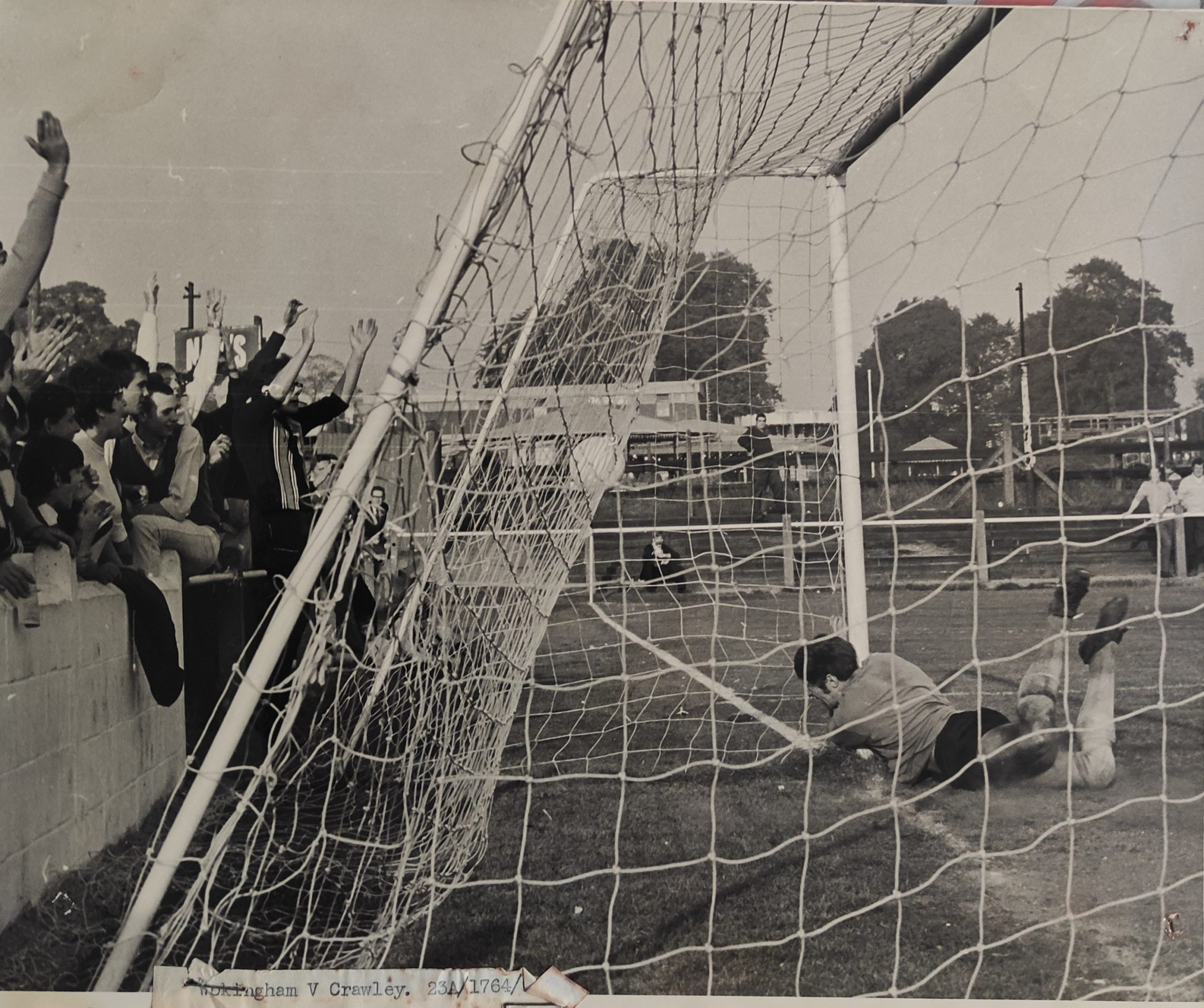
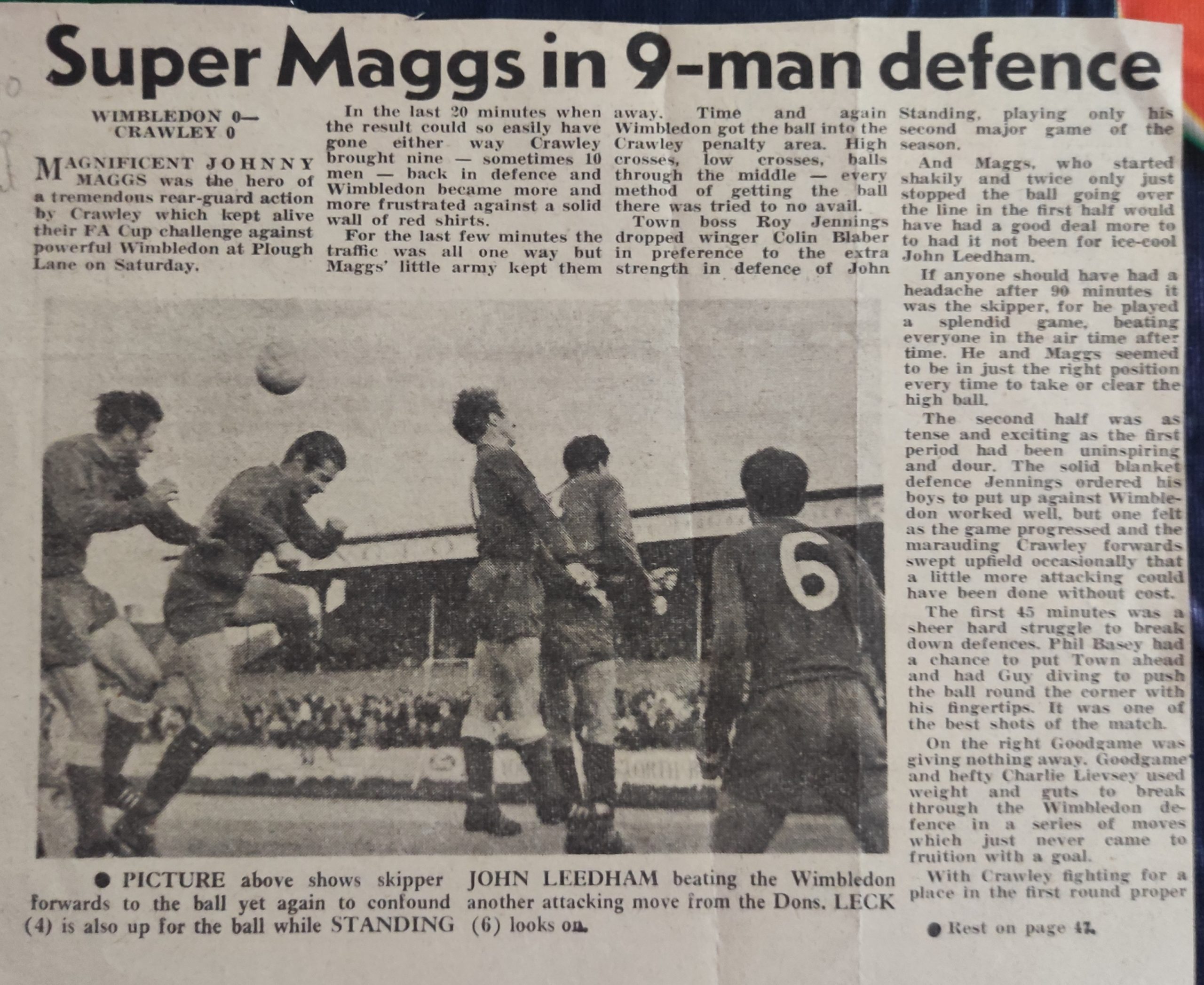
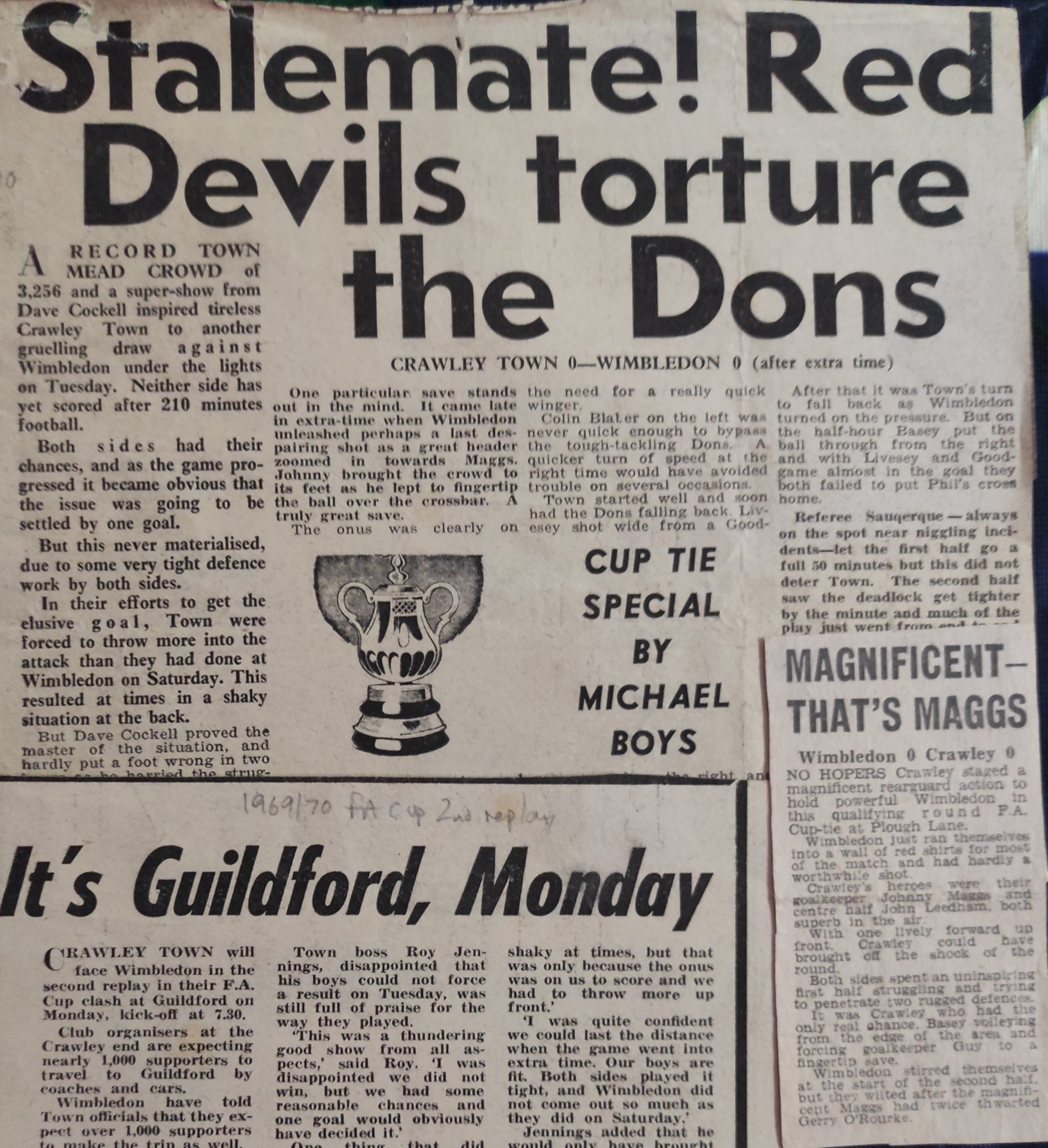
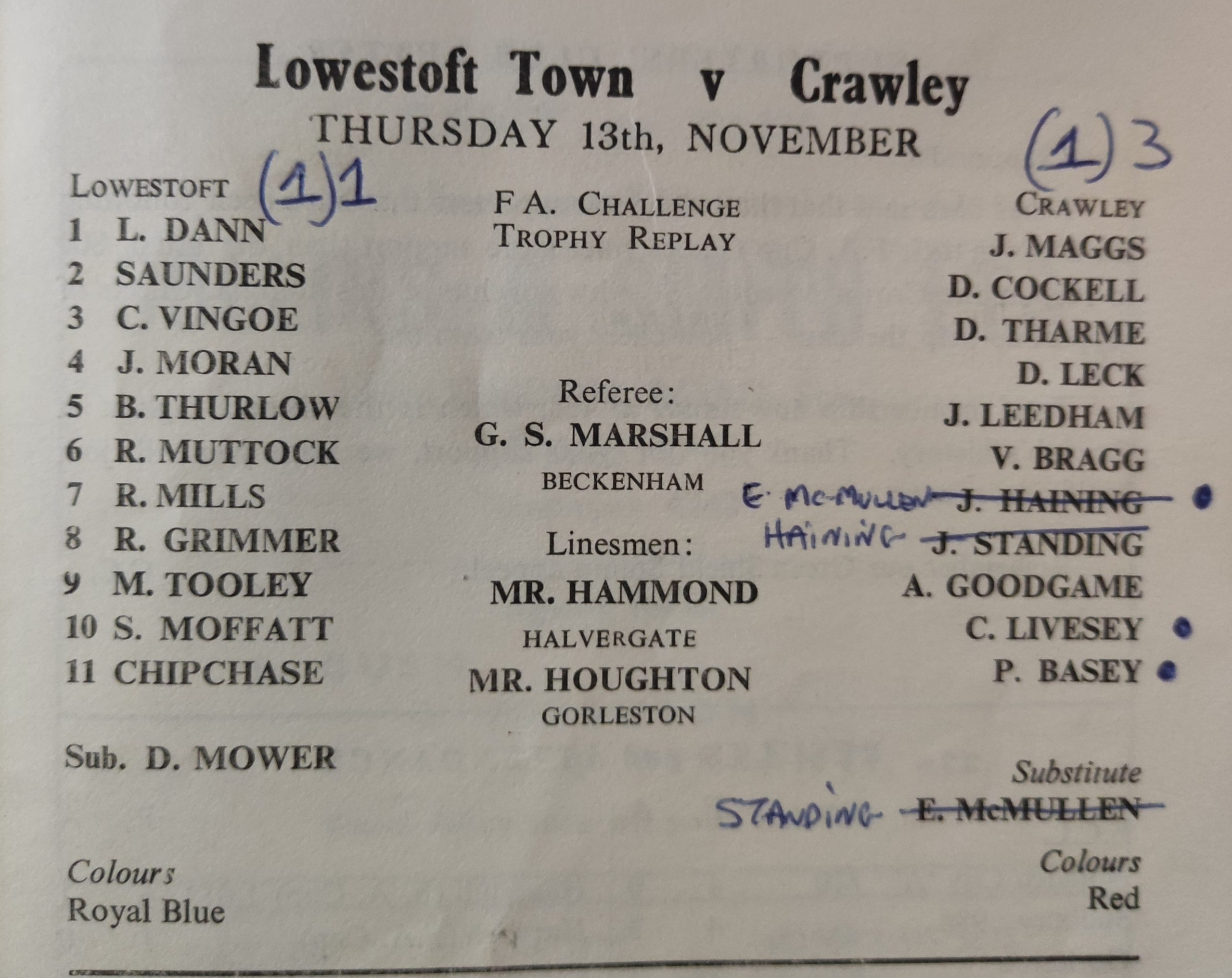
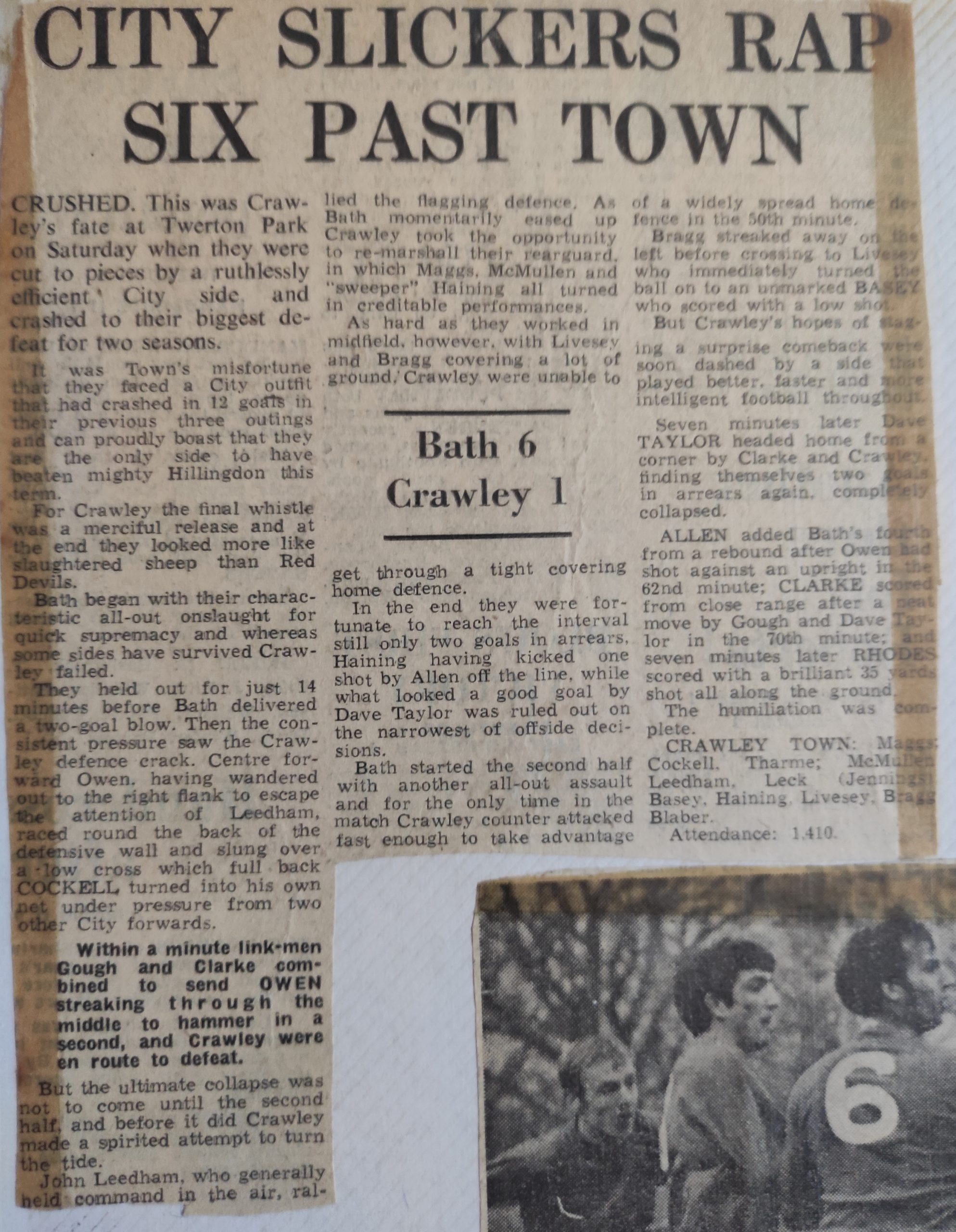
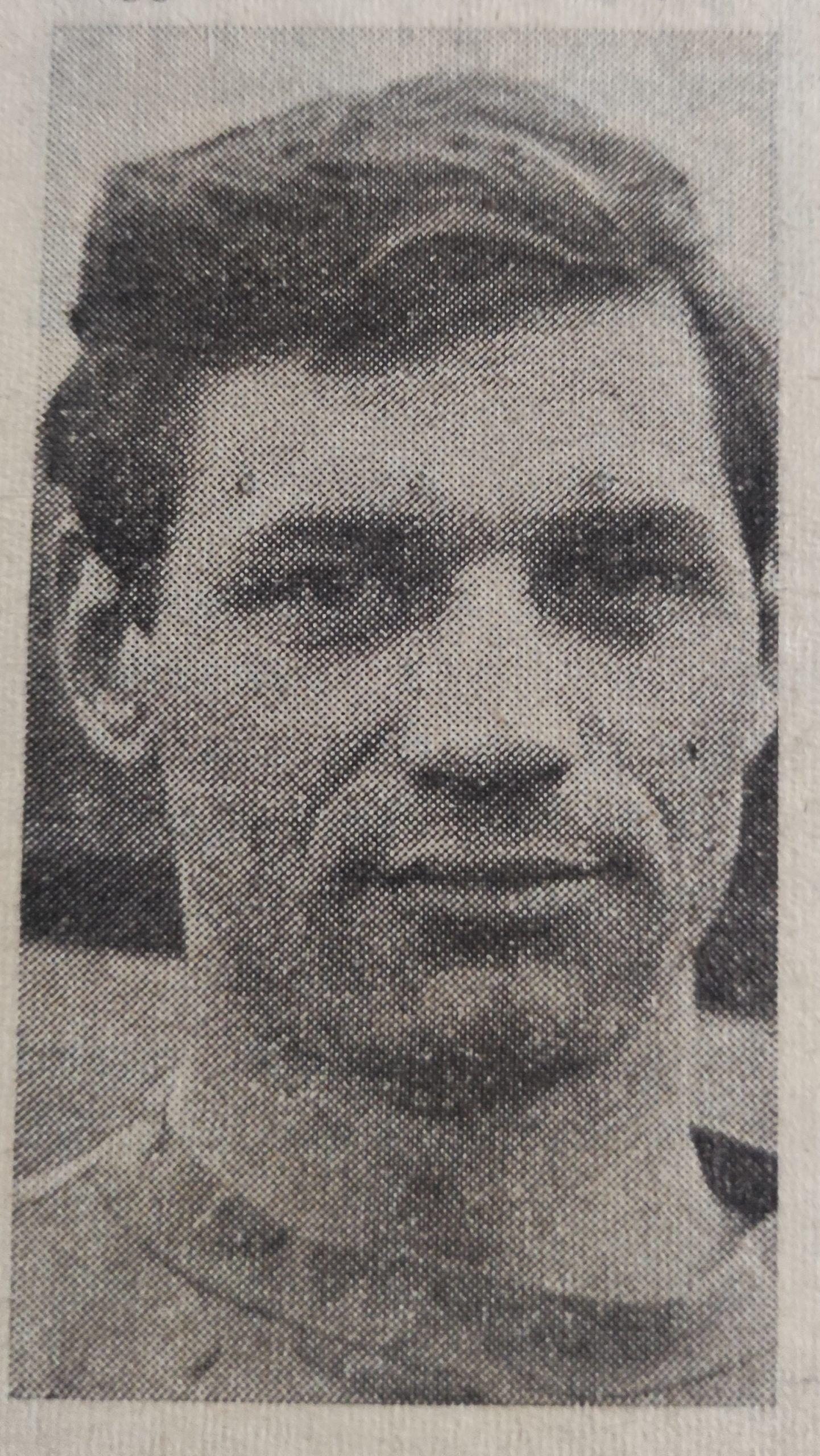

0 Comments